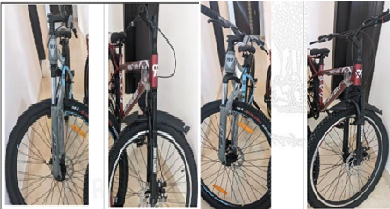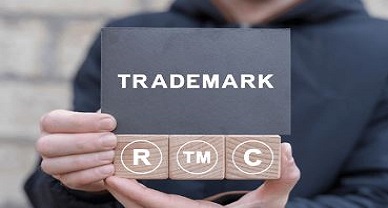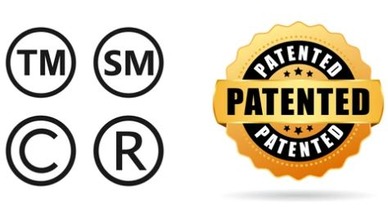Alphavector India vs. Sach Industries
Introduction
The decision was made in a lawsuit brought by Alphavector India Private Limited regarding the usage of its trademark “NINETY ONE/91” on bicycles. Because of their use of the trademark “NINETY NINE/99,” Sach Industries, Sachin Bike Private Limited, and others are the targets of the lawsuit.
The word and device marks 91 and Ninety-One to be used on bicycles and cycling accessories were submitted for registration by the plaintiff. It has registration rights to 91CARES, OUTSIDE 91, and VECTOR 91, among other 91-containing marks. The defendants claimed to have used “99” in conjunction with the marks “ONLY99” and “SACHINE99” in addition to using the numbers 99 and Ninety-nine on their bicycles. Plaintiff requested an injunction for trademark infringement and passing off. However, neither party is the registered owner of the word or number mark “91” or “99” per se. The defendant merely asserted a claim of prior user and offered no other arguments. But it was immediately undone when the plaintiff’s attorney pointed out the inconsistencies in the supporting paperwork.
As per the order, the plaintiffs adopted the mark “91” in alphanumeric and word form in September 2020. They have also used the “91” mark with other formations which are registered since 2020. However, the registration on the standalone “91” mark is pending. Thus, the Plaintiffs had and made two claims –
- passing-off of the standalone “91” mark which requires proving goodwill, misrepresentation, and injury to the plaintiff. Here, proving goodwill was the first step,
- infringement by proving that “91” is a dominant mark in previously registered formative marks.
But the Court combined them rather than evaluating each claim’s component. The sales figures, which the October order presumptively accepted, were the sole piece of evidence offered by the plaintiffs. Furthermore, it is not even mentioned or examined in the most current order. In People Interactive v. Vivek Pahwa, it was stated that “Mere use and statements of sales and expenses do not, on their own, prove the acquisition of secondary meaning.” This goes completely against that.
After consideration of all the arguments, it was determined that the defendant began using the mark no earlier than in July 2021. Given that there is less than a year between the plaintiffs’ use of the number 91 and the defendant’s use of the number 99 mark, the plaintiffs’ burden of proof to demonstrate goodwill ought to have been substantially higher and need considerable proof. The defendant, who only asserted one defence, namely past usage, and did not raise any objections to any of the plaintiff’s allegations, deserves some of the credit for the Court’s non-engagement. Yet, given that such a ruling might forbid anyone from using any number between 91 and 99 with 9 as a common number, it is more important than ever to consider goodwill.
The court determined that the defendant intended to imitate the plaintiff’s mark by relying on two principles, including I where there is clear imitation with an intent to deceive, the Court must not bend backwards to presume that the intent is not successful, and (ii) where there is intent to deceive, the Court must pay greater attention to the similarities between the co
The court appears to have overlooked the fact that resemblance alone is not illegal, which leads us to the issue of whether the contested marks (91 and 99) are defensible. Like earlier queries, this one explicitly addressed the idea that “arbitrary markings” needed to be protected. The Vrajlal Manilal vs. Adarsh Bidi case, in which the “22” mark on Bidis was accorded protection against the mark “122,” was cited in the October order. Nonetheless, the plaintiff was a past user in that case and his “22” mark was registered. Yet, the defendant did not start using the disputed mark until after the lawsuit.
Unquestionably, a number can be a trademark, as shown by the broad definition of “mark” in Section 2(1)(m). However, the level of distinctiveness determines whether it can be registered and protected. The consensus is that numerals do not necessarily stand out. The pertinent legal precedent can be found in, among other places, Matthew’s essay, Mona Aggarwal v. Glossy Colour, and Radico Khaitan v. Radico Khaitan. This means that in order to obtain protection, it must first be established that a numerical mark is distinctive enough. That is where the plaintiff’s good faith is crucial. But the court muddled together the allegations and spun around in circles to make its position rather than considering the generally accepted principles.
Conclusion
This also makes me wonder if “distinctiveness” is a fallacy that is subject to manipulation. Its “tilt” can be affected by the legal reasoning’s apparent logic and how inventively ‘relevant’ facts are incorporated into it. The more mistakes (or “unclean hands” material) of the defendant may be exposed, the more it helps to assess the “tilt”. Problematizing its case in this instance were the defendant’s fabrication of supporting documentation for earlier uses, prior admission of guilt, and non-engagement with the plaintiff’s claims.
Author: Tanya Saraswat, in case of any queries please contact/write back to us at support@ipandlegalfilings.com or IP & Legal Filing.
References
- Livelaw News Network, Delhi High Court halts manufacturing of ‘ninety nine’ bicycles after ‘Ninety One’ producer alleges trademark infringement Live Law (2022), https://www.livelaw.in/news-updates/delhi-high-court-halts-manufacturing-of-ninety-nine-cycles-after-ninety-one-manufacturer-alleges-trademark-infringement-212285 (last visited Mar 16, 2023).
- Lokesh Vyas, Numeral marks, passing off, trademark infringement – Delhi High Court’s all-in-one approach? SpicyIP (2023), https://spicyip.com/2023/02/numeral-marks-passing-off-trademark-infringement-delhi-high-courts-all-in-one-approach.html (last visited Mar 16, 2023).



